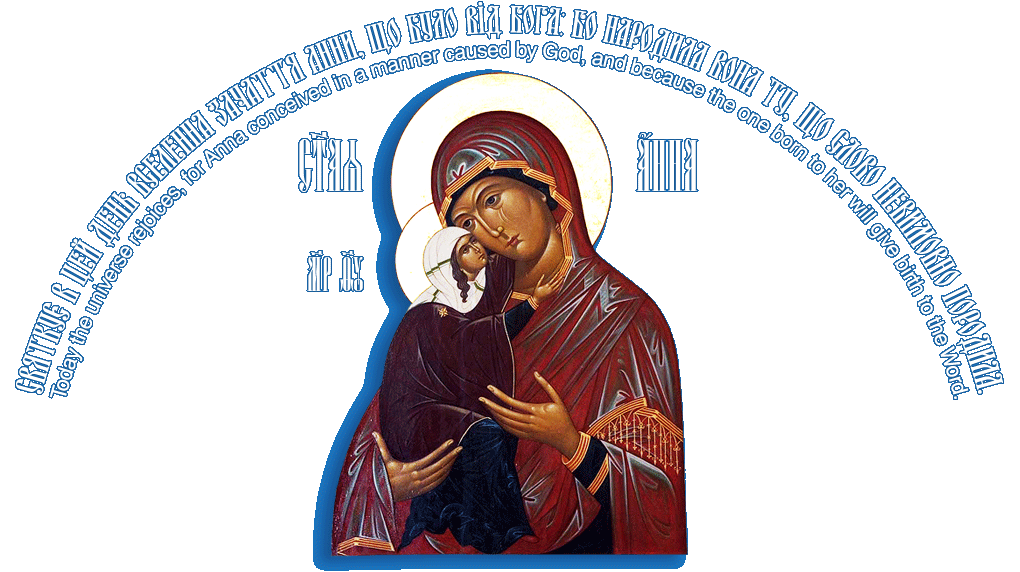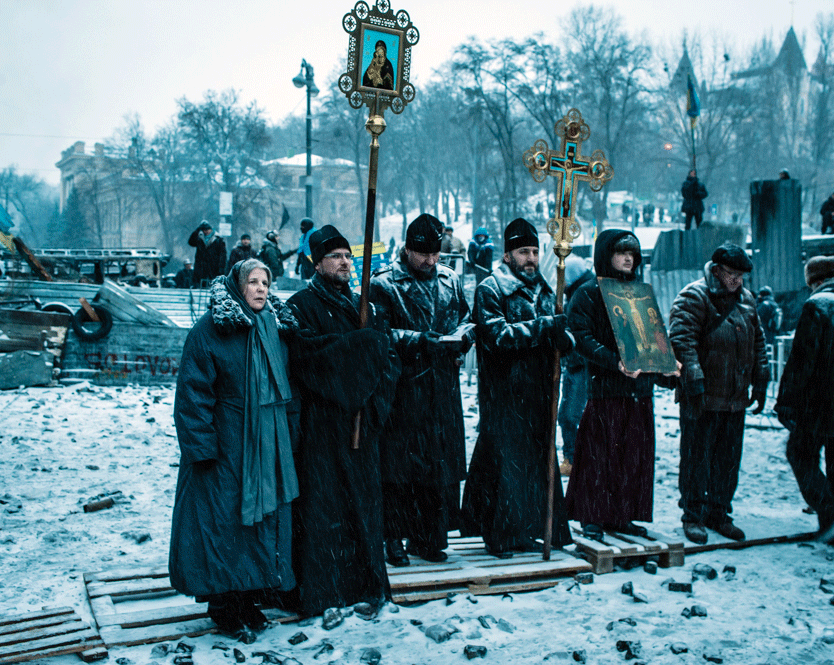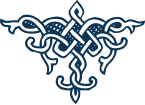Пcалом 124
Ті, що надіються на Господа, не похитнуться, як гора Сіон, що стоїть вічно.
Гори навкруги Єрусалима, а Господь — навкруги народу Свого віднині і навіки.
Бо не залишить Господь жезла нечестивих над долею праведних, щоб праведні не простягли руки свої до беззаконня.
Благодій, Господь, добрим і праведним серцем.
А тих, що звернули на криву дорогу неправди, нехай залишить Господь разом з тими, що чинять беззаконня. Мир на Ізраїля!
Psalm 124
They that trust in the Lord shall be as Mount Sion; he that dwells at Jerusalem, never more shall he be shaken.
Mountains are round about her, and the Lord is round about His people from henceforth and forevermore.
For the Lord will not permit the rod of sinners to be upon the lot of the righteous, lest the righteous stretch forth their hands unto iniquities.
Do good, O Lord, unto them that are good and unto the upright of heart.
But them that turn aside unto crooked ways shall the Lord lead away with the workers of iniquity, peace be upon Israel.
 УКРАЇНСЬКА ПРАВОСЛАВНА ЦЕРКВА В КАНАДІ
УКРАЇНСЬКА ПРАВОСЛАВНА ЦЕРКВА В КАНАДІ
UKRAINIAN ORTHODOX CHURCH OF CANADA
L’ÉGLISE ORTHODOXE UKRAINIENNE DU CANADA
9 St. John’s Avenue, Winnipeg, Manitoba R2W 1G8
Tel. (204) 586-3093 (204) 582-8709 • Fax. (204) 582-5241 •
web site: www.uocc.ca • e-mail: consistory@uocc.ca
22-го січня 2014 p. Б.
Звернення Єпископату Української Православної Церкви в Канаді у зв’язку з останніми подіями в Україні
Всечесному духовенству, преподобному чернецтву і всім вірним, братам і сестрам УПЦК,
Слава Icyсу Христу!
Єпископат Української Православної Церкви в Канаді висловлює глибоку тривогу і занепокоєння в зв’язку з останніми трагічними подіями на нашій духовній Батьківщині-Україні, яка увійшла в один з найважчих періодів її сучасної історії. У день великого і світлого свята Богоявлєння Господнього ми побачили жахливу темряву і кровопролиття. Ми глибоко стривожені фізичним насильством і трагічною загибеллю людей і приєднуємося до всього світу висловлюючи наші щирі співчуття родинам тих, хто загинув і хто був поранений протягом останніх днів.
Звертаємось до всіх українців Канади молитися до Господа нашого і Спасителя за всіх тих, котрі ризикуючи своїм життям, борються за єдність народу, за моральну справедливість і побудову Української держави. Ми також закликаємо вірних нашої церкви особливо благати Пресвяту Богородицю про її заступництво, щоб Вона своїм Омофором захистила наш український народ, як це неодноразово було в історії України і щоб врятувала його від нового кровопролиття і насильства.
Ми, Ієрархи УПЦК, ще раз закликаємо вас — наших співгромадян — духовно підтримати наших братів і сестер в Україні, і відгукнутися на заклик Світового Конгресу Українців і Конгресу Українців Канади — матеріально підтримати їх. Ми повинні повідомити Уряд Канади про нашу стривоженість і затурбованість з приводу останніх трагічних подій в Україні в цей критичний момент для нашого Боголюбивого українського народу.
Ми благословляємо нашому духовенству в неділю 26-го січня і в наступні неділі під час Св. Літургії на Благальній єктенії після прохання “Ще молимося за змилування, життя, спокій..” додати наступне прохання:
“Ще молимося за братів і сестер наших в Україні, що в цей час великих випробувань зазнають погроз, принижень і побоїв. Захисти їх Всємилосєрдний Господу і даруй їм любов, єдність, злагоду і перемогу над ворогами, щоб у нашому народі запанували свобода, правда і справедливість”.
Ми також благословляємо після Божестенної Літургії відслужити Панахиду за упокій душ невинно вбитих від насильства і переслідування.
Нехай Господь Бог вислухає наші благальні молитви і благословить нашу вільну духовну батьківщину Україну і її многостраждальний народ.
З архипастирським благословенням,
† ЮРІЙ, Митрополит
† ІЛАРІОН, Єпископ
† АНДРІЙ, Єпископ
Псалом 125
Коли повертав Господь з полону Сіон, нам здавалося, що то був сон.
Тоді були душі наші повні радости, і з уст наших лилася пісня.
Тоді між народами говорили: Велике сотворив Господь над нами.
Так, Господь явив над нами велике; ми раділи серцем.
Поверни ж, Господи, невільників наших, як потоки на південь.
Ті, що сіють зі сльозами, пожнуть з радістю.
Хто з плачем ніс сіяти зерно своє, той повернеться веселий, несучи снопи свої.
Psalm 125
When the Lord turned again the captivity of Sion, we became as men that are comforted.
Then was our mouth filled with joy, and our tongue with rejoicing.
Then shall they say among the nations: The Lord has done great things unto them.
The Lord has done great things among us, and we are become glad.
Turn again, O Lord, our captivity, like streams in the south.
They that sow with tears shall reap with rejoicing.
In their going they went, and they wept as they cast their seeds.
But in their coming shall they come with rejoicing, bearing their sheaves.
 УКРАЇНСЬКА ПРАВОСЛАВНА ЦЕРКВА В КАНАДІ
УКРАЇНСЬКА ПРАВОСЛАВНА ЦЕРКВА В КАНАДІ
UKRAINIAN ORTHODOX CHURCH OF CANADA
L’ÉGLISE ORTHODOXE UKRAINIENNE DU CANADA
9 St. John’s Avenue, Winnipeg, Manitoba R2W 1G8
Tel. (204) 586-3093 (204) 582-8709 • Fax. (204) 582-5241 •
web site: www.uocc.ca • e-mail: consistory@uocc.ca
January 22, 2014
Statement of the Hierarchy of the Ukrainian Orthodox Church of Canada Regarding the Most Recent Events in Ukraine
Reverend clergy, venerable monastics and faithful brothers and sisters,
Glory to Jesus Christ!
The Episcopate of the Ukrainian Orthodox Church of Canada expresses deep concern and distress at the most recent tragic events in our ancestral homeland, Ukraine, which has entered one of the most difficult periods of its modern history. On the day of the glorious and bright Feast Day of the Holy Theophany of our Lord, we witnessed darkness and bloodshed. We are greatly alarmed and troubled by the outbreak of violence and the tragic loss of life. We join with the entire world in expressing our sincere condolences to the families of those who perished and who have been injured during this time.
We call upon Ukrainians in Canada to pray to our Lord and Saviour for all those whose very lives are being risked for the unity of the nation, for moral righteousness and positive changes in building the Ukrainian state. We also call on the faithful to beseech especially the Most Holy Theotokos for Her intercession and Omophor of protection of the Ukrainian people, as She has many times throughout Ukraine’s history, to save them from further atrocities and violence.
We, the Hierarchs of the UOCC, reiterate our call upon you, our fellow citizens, to spiritually support our brothers and sisters in Ukraine and to support the call for material assistance by the Ukrainian World Congress and the Ukrainian Canadian Congress. Let us make known to the Government of Canada our distress at the most recent heartbreaking events in Ukraine at this critical time for our God-loving Ukrainian people.
We bless our clergy on Sunday, January 26, 2014 and on the following Sunday, during the Divine Liturgy at the Litany of Fervent Supplication, following the petition: “Again we pray for mercy, life, peace… “ to add the following petition:
“Again we pray for our brothers and sisters in Ukraine, who at this time of great trials, have come to know threats, oppression and beatings. Protect them, All-merciful Lord, and grant them love, unity, peace and victory over the enemy, so that freedom, truth and justice may reign among our people.”
We also bless that following the Divine Liturgy a Panakhyda memorial service may be served for the innocent victims of the violence and repression.
May the Lord God hear our entreating prayers and blesses our free spiritual Motherland Ukraine and its long-suffering people.
With Hierarchical Blessings,
† YURIJ, Metropolitan
† ILARION, Bishop
† ANDRIY, Bishop





















